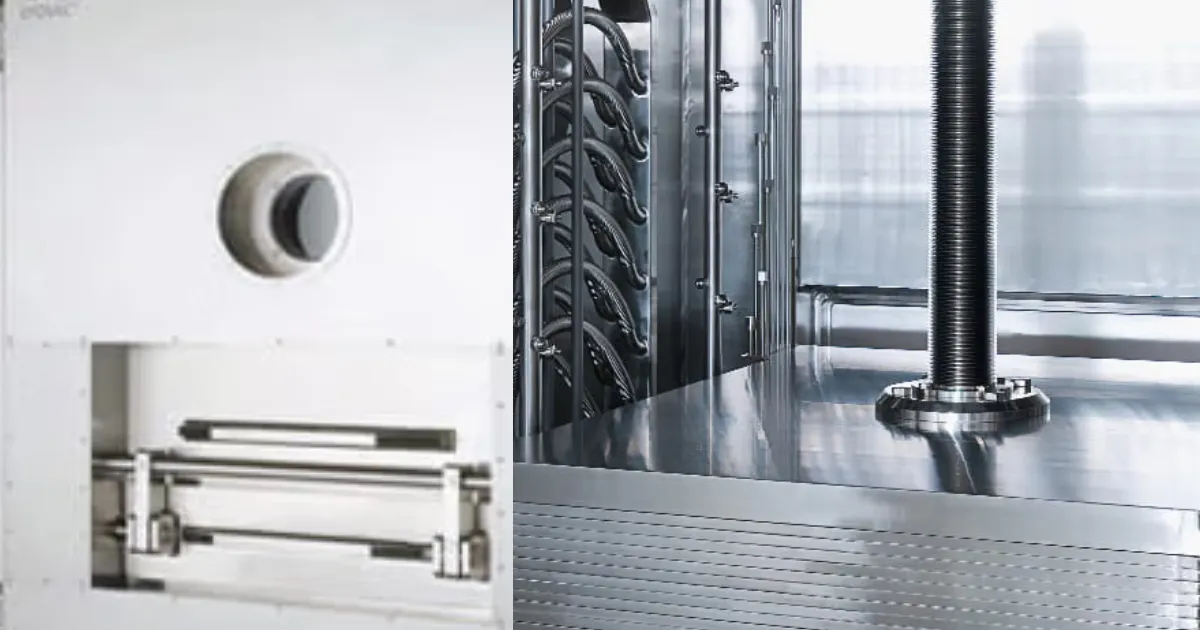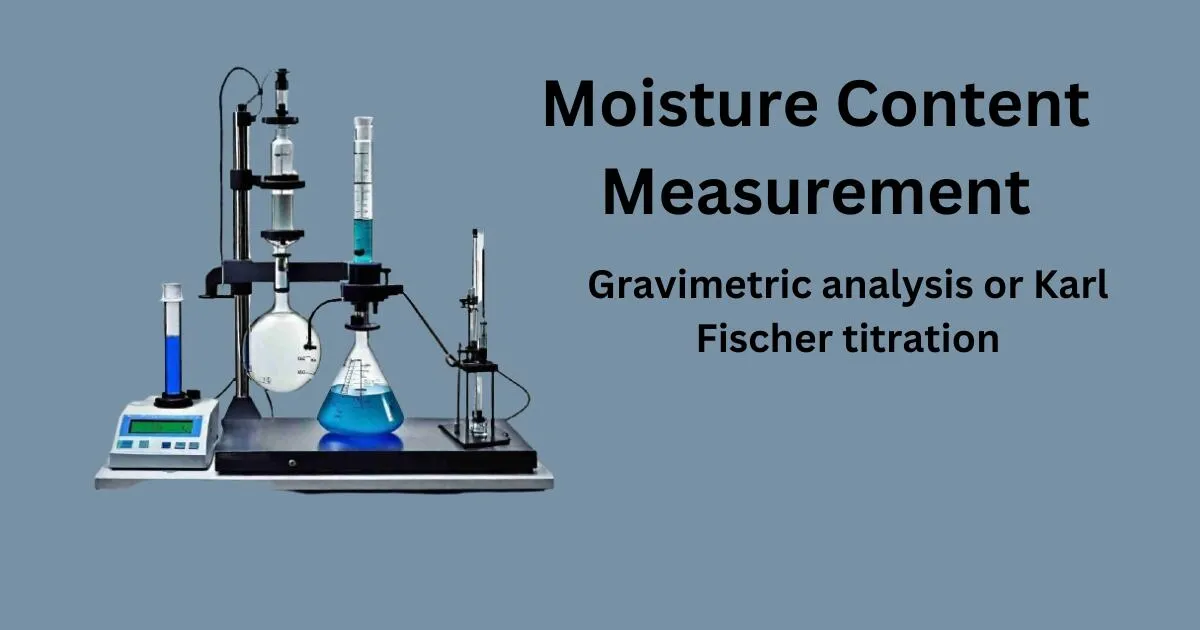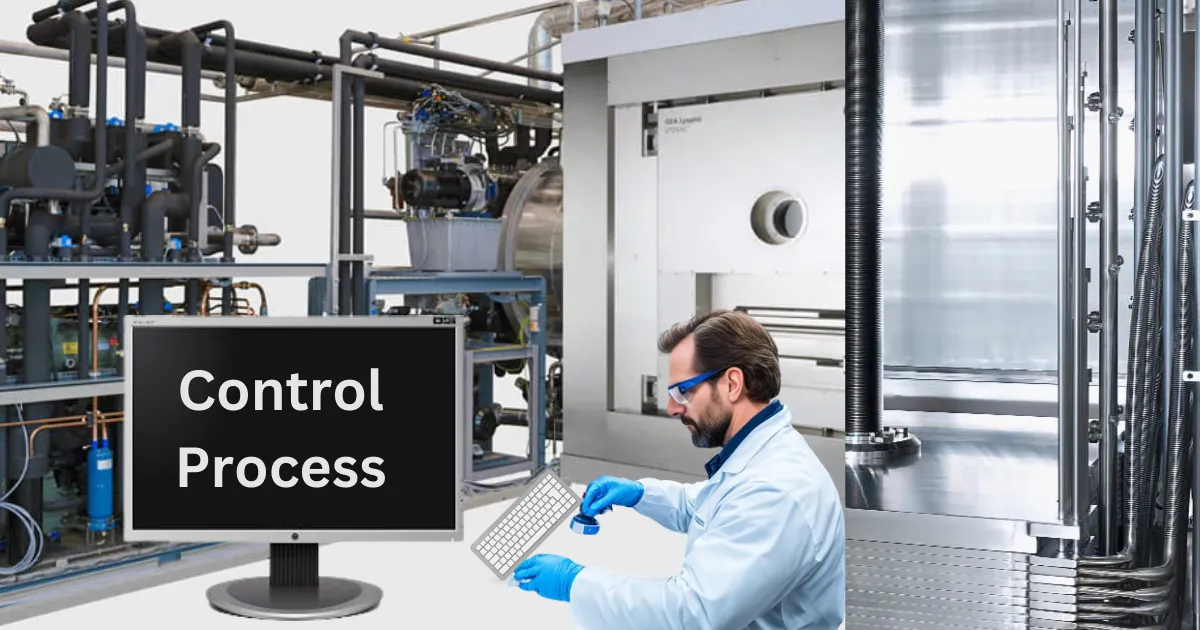Optimizing Control Parameters in Freeze-Drying Process, In the world of pharmaceuticals, freeze-drying (or lyophilization) is key. It helps keep drugs stable and effective. This method removes water or solvents, making the product dry and easy to mix with water later. Getting the freeze-drying right is vital for quality, safety, and effectiveness of drugs.
This article covers the main parts of freeze-drying. We’ll talk about why it’s important to watch and control key factors. We’ll look at how to manage temperature, vacuum, condenser performance, and moisture levels. These are key to making freeze-drying work well.
By understanding these control parameters, pharmaceutical companies can make their freeze-drying more reliable. This leads to better-quality products for patients. Let’s explore how to improve your freeze-drying for better results and to follow the rules.
Key Takeaways
- Understand the importance of freeze-drying in pharmaceutical manufacturing
- Explore the principles and stages of the lyophilization process
- Discover the critical control parameters that impact freeze-drying efficiency
- Learn best practices for monitoring product temperature and regulating vacuum pressure
- Optimize condenser performance and moisture analysis for quality control
- Streamline freeze-drying cycles through process validation and cycle optimization
- Enhance the reliability and consistency of your freeze-drying operations
Understanding the Freeze-Drying Process
The freeze-drying process, also known as lyophilization, is key in making medicines. It keeps drugs that are sensitive to temperature stable and effective for a long time.

Importance of Freeze-Drying in Pharmaceutical Manufacturing
Pharmaceutical companies use the freeze-drying process for many drugs, like vaccines and protein therapies. This method makes these delicate drugs last longer. It also makes them easier to transport and store without losing quality.
Principles and Stages of Lyophilization
The lyophilization process has several steps, including prefreezing, primary drying, and secondary drying. First, the drug is cooled to freeze its water content, making it stable and porous. Then, in primary drying, most of the frozen water is removed by turning it directly into vapor.
In the secondary drying stage, any remaining water is taken out. This makes sure the final product has the right amount of moisture.
Steps involved in Lyophilization:
After starting the freeze dryer, the loading temperature achieved, then the freeze dryer door is opened in aseptic area side and the empty and filled vial is loaded into the freeze dryer. The freezing cycle is then started by SCADA (Supervisory Control and Data Acquisition) systems, which are used for controlling and monitoring the freeze drying process or
Loading stage: Once the freeze dryer is started and the loading temperature is reached, the door is opened in a sterile area. Empty and filled vials are then loaded into the freeze dryer before initiating the freezing cycle using SCADA.
Freezing: A material changes from a liquid to a solid state during freezing. This transition occurs when the liquid’s molecules slow down enough to be arranged into a solid form with definite places by their attraction forces.
Primary Drying (Sublimation): Pressure is lowered, and heat is added to allow the ice to sublimate directly into vapor. During the primary drying phase, water vapor adheres to and solidifies on the cold condenser surface, protecting the vacuum pump from moisture. Approximately 95% of the material’s water content is removed during this slow process.
Secondary Drying (Desorption): Remaining moisture is removed by further lowering pressure and raising temperature. or Water desorption from the cake starts in the same spot as primary freeze-drying is finished and all ice has been removed via sublimation. The primary drying phase is when this stage, called secondary drying, begins.
Stoppering temperature
After completion of secondry drying stage then achive the stoppering temperature and process go to next stage.
Venting and Stoppering of vials
After completing the secondary drying process, vials are fully stoppered in the freeze dryer using the stoppering force applied by the shelf. venting the chamber with nitrogen 5.0 Stoppering the vials inside the freeze dryer in nitrogen atmosphere .
Unloading stage: after completion of freeze drying and stoppering stage then reach the unloading temperature and open the door in aseptic area side and unloading the freeze drying product.
| Stage | Description |
|---|---|
| Prefreezing | Solidifying the water content to create a stable, porous structure. |
| Primary Drying | Removing the majority of the frozen water through sublimation. |
| Secondary Drying | Removing any remaining unfrozen water molecules to meet moisture content specifications. |
Knowing how the freeze-drying process works is crucial for making medicines. It helps manufacturers control the process better. This ensures their drugs are of high quality and stable.
Key Control Parameters of Freeze-Drying Process
The freeze-drying process relies on several key factors for success. These factors must be managed well to get the best results and quality products. It’s vital for pharmaceutical companies to know these factors well.
Some important factors in freeze-drying include:
- Minimum temperature for prefreezing: It’s crucial to pre-freeze the product properly for drying to work well.
- Condenser cooling time: The cooling of the condenser is key to removing moisture from the product.
- Vacuum time: How long the vacuum stage lasts affects how fast moisture is removed and the process’s efficiency.
- Start heating time: Knowing when to start heating the product is important to keep it at the right temperature and avoid damage.
- Maximum permissible temperature for product heating: Keeping an eye on and controlling the product’s temperature is vital for the product’s safety.
- Working hours for correcting leaks: Fixing leaks quickly is important to keep the vacuum clean and stop contamination.
- Total freeze-drying time: Getting the freeze-drying cycle right is key to the right moisture level and product quality.
By understanding and managing these control parameters, pharmaceutical companies can make sure their freeze-dried products are consistent in quality and effectiveness. This meets the high standards of the industry.
“Proper control of the freeze-drying process parameters is essential to ensure the desired product quality and stability.
Optimizing Product Temperature Monitoring
Keeping an eye on product temperature is key in freeze-drying. It’s vital to keep the temperature right during the whole process. This helps keep the product quality high and makes freeze-drying a success.
Monitoring Techniques and Best Practices
Pharmaceutical companies have a few ways to check the temperature of their products during freeze-drying. Thermocouples and infrared sensors are two main methods they use.
- Thermocouples: These tools directly measure the product’s temperature by touching it. They give accurate temperature readings, making them a top choice for freeze-drying.
- Infrared Sensors: These sensors use infrared radiation from the product to measure its temperature. They let you check the temperature from a distance without interrupting the freeze-drying. They’re great for watching the product’s surface temperature.
To make sure product temperature monitoring works well, follow these best practices:
- Put sensors in the right spots to get accurate temperature readings.
- Keep the monitoring gear well-calibrated and maintained.
- Link the temperature data with the freeze-drying system to make changes in real-time.
- Check and analyze the temperature data often to spot problems and ways to improve.
Using strong strategies for monitoring product temperature helps pharmaceutical companies. It keeps the freeze-drying process in the best temperature range. This leads to better product quality, more efficient processes, and better freeze-drying cycle results.
Regulating Vacuum Pressure for Efficient Drying
Getting the vacuum pressure right is key to drying things efficiently during freeze-drying. Pharmaceutical companies must watch the pressure closely to remove water vapor and speed up drying. By managing the pressure well, they make the freeze-drying process better and keep the product quality high.
The vacuum pressure is very important in the sublimation stage of freeze-drying. Here, frozen water turns straight into vapor. With the right pressure, the drying chamber gets rid of water vapor quickly, speeding up drying and keeping the product safe from damage.
To get the best freeze-drying efficiency, companies need to balance vacuum pressure with temperature. By watching and tweaking the pressure, they keep the right conditions for product quality and drying time.
It’s crucial to check and adjust the vacuum pressure often to keep it steady during freeze-drying. This focus on detail keeps the product just right and avoids quality problems or longer drying times.
“Effective vacuum pressure regulation is the key to unlocking the full potential of the freeze-drying process and delivering high-quality pharmaceutical products.”
Understanding the role of vacuum pressure and using best practices helps pharmaceutical companies improve their freeze-drying. This leads to better freeze-drying efficiency, steady product quality, and a shorter drying time.
Control Parameters Of Freeze-Drying Process
Mastering the freeze-drying process is key for pharmaceutical makers. It ensures product quality and efficient production. By knowing how to adjust these parameters, companies can make their freeze-drying cycles better and speed up production.
Understanding the Impact of Process Parameters
The main control parameters in freeze-drying are product temperature, vacuum pressure, and drying time. Changing these can greatly affect the process’s efficiency and the quality of the final product.
Keeping the product at the right temperature during freeze-drying is vital. It stops the product from breaking down and keeps the right moisture level. Also, controlling the vacuum pressure helps dry the product faster and more evenly.
| Control Parameter | Impact on Product Quality | Impact on Process Optimization |
|---|---|---|
| Product Temperature | Influences product stability, reconstitution, and residual moisture content | Determines the rate of primary and secondary drying |
| Vacuum Pressure | Affects the rate of sublimation and final moisture content | Impacts the overall efficiency and duration of the freeze-drying cycle |
| Drying Time | Ensures complete removal of moisture to meet product specifications | Contributes to the overall process validation and consistency |
By watching and tweaking these control parameters, pharmaceutical companies can make their freeze-drying better. This leads to better product quality and smoother operations.
“Effective control and optimization of the freeze-drying process parameters are essential for producing high-quality pharmaceutical products with consistent performance.”
Condenser Performance and Maintenance
The condenser unit is key in the freeze-drying process. It removes water vapor efficiently. Keeping the condenser in top shape is vital for a smooth freeze-drying cycle and high-quality products.
Optimizing Condenser Cooling and Defrosting
Keeping the condenser cool is crucial for removing water vapor. Pharmaceutical companies must watch and adjust the cooling system closely. This keeps the condenser performance up, boosts freeze-drying efficiency, and keeps product quality high.
It’s also important to defrost the condenser coils regularly. Ice and frost can block the condenser from working right, hurting condenser cooling and the freeze-drying process. A good defrosting plan is key to keeping the condenser’s performance strong and freeze-drying consistent.
| Condenser Performance Factors | Impact on Freeze-Drying Process |
|---|---|
| Cooling System Efficiency | Influences Water Vapor Removal Capacity |
| Defrosting Frequency and Effectiveness | Affects Condenser Capacity and Drying Consistency |
| Maintenance and Monitoring | Ensures Optimal Condenser Function and Product Quality |
By managing the cooling and defrosting of the condenser well, pharmaceutical companies can improve the condenser performance. This leads to better freeze-drying efficiency and consistent, high-quality products.
Moisture Analysis and Quality Control
Moisture analysis is key in freeze-drying, affecting the quality and stability of the final product. It helps validate the freeze-drying process. This ensures the drug’s safety and effectiveness.
Moisture analysis checks the moisture in the freeze-dried product. This information is vital for checking the lyophilization process’s success. It also helps set the right storage conditions for the drug.
Moisture test procedure and instrument by karl fischer titration

Keeping moisture levels precise during freeze-drying is crucial. Too much moisture can harm the drug’s stability and shelf life. Too little drying can reduce the drug’s strength and quality. Moisture analysis tools like Karl Fischer titration or near-infrared spectroscopy help monitor moisture levels. This lets manufacturers adjust the freeze-drying cycle as needed.
Karl Fischer Method of Moisture Detection
The Karl Fischer Method is a technique developed by chemist Karl Fischer to determine moisture content. It uses a reagent that reacts with water, converting it into a non-conductive chemical, allowing for specific detection of water in a product.
There are two main methods for performing the Karl Fischer titration test:
- Volumetric Karl Fischer
- Coulometric Karl Fischer
Moisture analysis is also a key quality control tool. It helps validate the freeze-drying process and ensures product consistency. This data can improve the freeze-drying cycle, spot problems, and enhance product quality.
Pharmaceutical companies that use moisture analysis in quality control deliver top-quality, stable drugs. This approach meets regulatory standards and customer needs. It ensures the product’s safety and effectiveness. It also keeps the freeze-drying process reliable, aiding in the success of pharmaceutical manufacturing.
Cycle Optimization and Process Validation
Making top-notch freeze-dried products means always working to improve the freezing cycle and checking key control points. Using the latest freeze-drying machines and making decisions based on data helps pharmaceutical companies make their freeze-drying cycles better. This leads to more efficient, consistent, and high-quality freeze-dried products.
Streamlining Freeze-Drying Cycles
It’s key to make the freeze-drying cycle better to get the most out of the process and make products of the highest quality. By keeping an eye on important things like temperature, vacuum, and how well the condenser works, companies can make their freeze-drying just right. Using data and the newest technology lets companies improve their efficiency and make better products.
It’s also vital to validate the freeze-drying process to make sure it always meets quality standards. With strong quality checks, like checking moisture levels and reviewing data, companies can prove their freeze-drying cycles work well. This means they can make sure their freeze-dried products are top-notch.
🔗 Internal Links to Include
- Pioneers of Freeze-Drying Food: Revolutionizing Food Preservation
- Lyophilized Drug Stability
- Failure: Compressor Excess Temperature During Freezing
- Freeze Dryer Operational Qualification Protocol
- TIM APG100 Active Pirani Gauge
FAQ
What are the key control parameters of the freeze-drying process?
Key control parameters include the minimum temperature for prefreezing and the cooling time for the condenser. Also, vacuum time, start heating time, and the maximum temperature for heating the product matter. Plus, working hours for fixing leaks and the total freeze-drying time are important. Managing these well ensures the process works efficiently and produces quality lyophilization.
How can product temperature be effectively monitored during the freeze-drying cycle?
Use thermocouples and infrared sensors to monitor product temperature accurately. It’s key to place sensors correctly and calibrate them regularly. This helps optimize the freeze-drying cycle and keeps the product quality high.
Why is vacuum pressure regulation important in the freeze-drying process?
Regulating vacuum pressure is key for efficient drying in freeze-drying. The right pressure levels help remove water vapor, cutting down drying time and boosting efficiency.
How does the condenser performance affect the freeze-drying process?
The condenser’s performance and upkeep are crucial in freeze-drying. Making sure it cools well and defrosts properly is vital. This ensures efficient removal of water vapor and keeps the freeze-drying cycle running smoothly.
What is the importance of moisture analysis in the freeze-drying process?
Moisture analysis is vital for quality control in freeze-drying. It affects the product’s quality and stability. Strong moisture analysis protocols validate the process and ensure high-quality, stable products.
How can freeze-drying cycles be optimized and validated?
Optimizing and validating freeze-drying cycles improves efficiency, consistency, and product quality. Using advanced equipment and making decisions based on data can streamline the process. This ensures the freeze-drying cycles are reliable and consistent.
